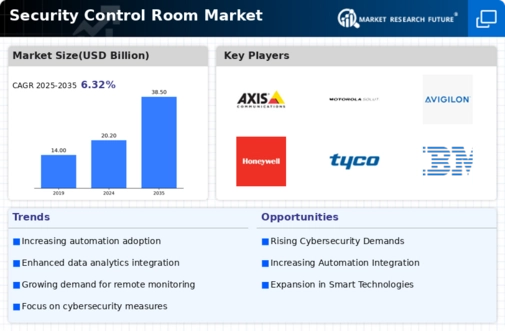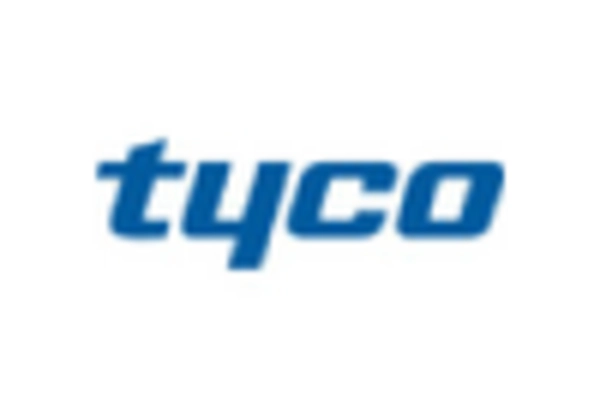Regulatory Compliance
The necessity for compliance with various regulatory frameworks is a crucial driver for the Security Control Room Market. Organizations are increasingly required to adhere to stringent security regulations, which mandate the implementation of effective monitoring systems. This compliance not only helps in mitigating risks but also enhances the overall security posture of organizations. Data indicates that sectors such as finance and healthcare are particularly affected, with compliance-related investments in security control rooms expected to rise by approximately 15% annually. As regulations evolve, businesses are compelled to invest in advanced control room technologies that ensure adherence to these standards, thereby driving market growth.
Rising Security Concerns
The increasing prevalence of security threats across various sectors appears to drive the Security Control Room Market. Organizations are investing heavily in advanced security measures to protect their assets and personnel. According to recent data, the demand for security control rooms is projected to grow at a compound annual growth rate of approximately 8.5% over the next five years. This growth is largely attributed to heightened awareness of potential risks, including cyber threats and physical security breaches. As a result, businesses are prioritizing the establishment of robust security control rooms to monitor and respond to incidents effectively. The integration of surveillance technologies and real-time data analytics is becoming essential in this context, further propelling the market forward.
Technological Advancements
The rapid evolution of technology is significantly influencing the Security Control Room Market. Innovations such as artificial intelligence, machine learning, and advanced video analytics are enhancing the capabilities of security control rooms. These technologies enable operators to process vast amounts of data swiftly, improving situational awareness and response times. Market data suggests that the adoption of AI-driven solutions in security control rooms is expected to increase by over 30% in the coming years. This trend indicates a shift towards more automated and intelligent systems, which can analyze patterns and predict potential threats. Consequently, organizations are compelled to upgrade their control room infrastructures to remain competitive and effective in safeguarding their environments.
Globalization and Urbanization
The trends of globalization and urbanization are significantly impacting the Security Control Room Market. As cities expand and populations grow, the complexity of security challenges increases. Urban areas are becoming more vulnerable to various threats, necessitating the establishment of advanced security control rooms to manage these risks effectively. Market analysis indicates that urban centers are expected to see a 25% increase in the deployment of security control rooms over the next few years. This growth is driven by the need for integrated security solutions that can address the multifaceted nature of urban security challenges. Consequently, organizations are investing in control room technologies that facilitate real-time monitoring and coordination among various security agencies.
Increased Investment in Security Infrastructure
The growing recognition of the importance of security infrastructure is propelling the Security Control Room Market. Organizations are allocating larger budgets towards enhancing their security frameworks, which includes the establishment and upgrading of control rooms. Recent statistics reveal that investments in security infrastructure are projected to reach over 200 billion dollars by 2026. This trend is particularly evident in sectors such as transportation, energy, and public safety, where the need for comprehensive monitoring systems is paramount. As organizations seek to bolster their defenses against various threats, the demand for sophisticated security control rooms is likely to surge, reflecting a broader commitment to safety and risk management.

















Leave a Comment